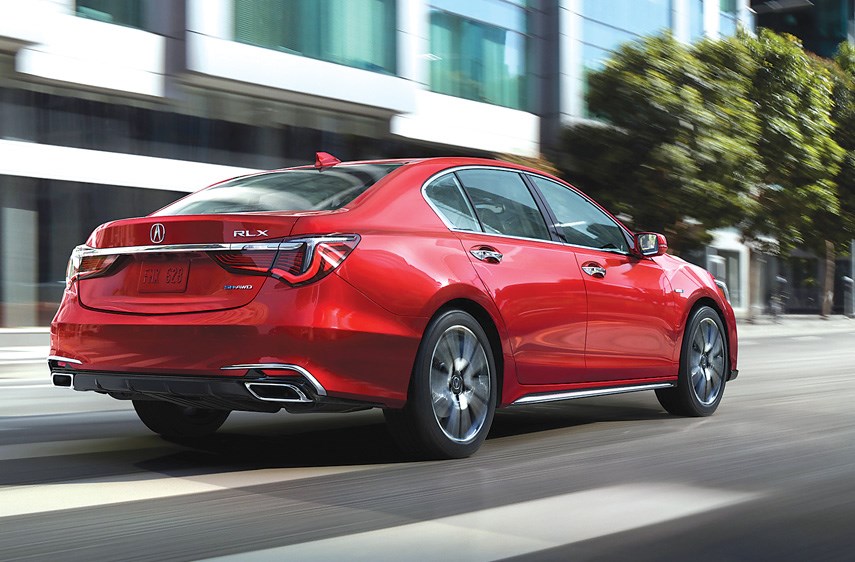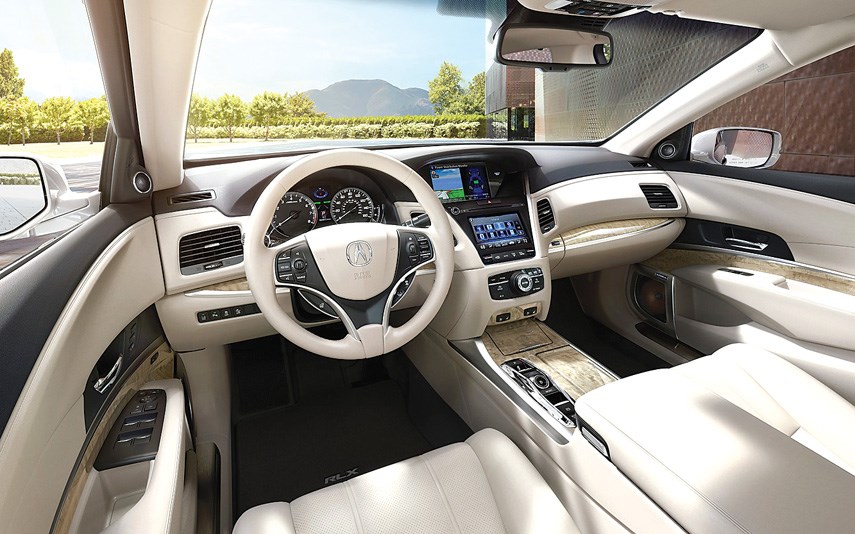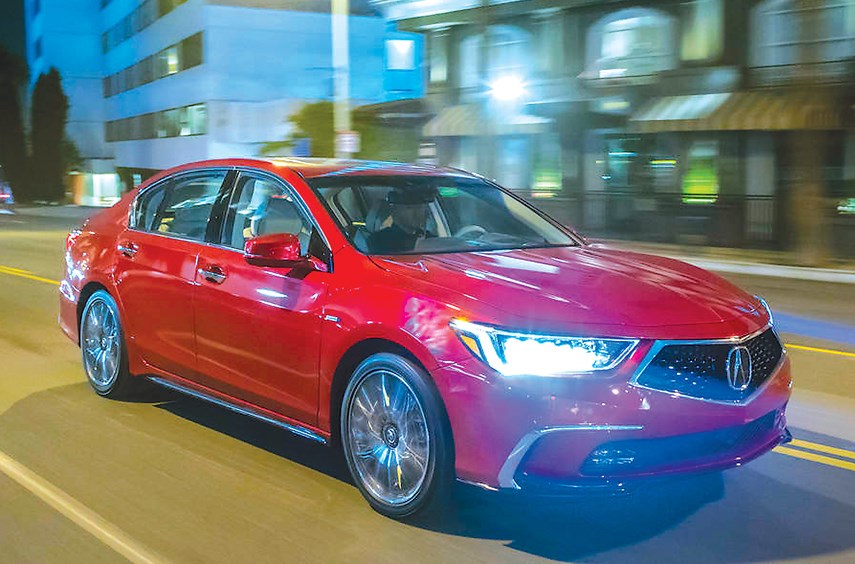The comedy sketch show Portlandia opens with a recurring jokey theme, with dozens of people coming together and singing. “The dream of the ‘90s is alive in Portland,” they croon, poking fun at the city’s quirks and eternal love of flannel and tattoos.
Having lived through the decade, I think we can all remember that the 1990s were a heady time of optimism, filled with either pastel colours or grunge, Gap pleated khakis and the dot-com boom (and bust). And, if you were Acura, there was no better time to be selling cars.
Acura burst into the 1990s with the NSX, and sailed through for 10 years with compelling products, one after another. The Integra. The Legend. The plucky little 1.6EL. Sure they were all Hondas at heart, but with revvy powertrains and deft handling crowned with a touch of luxury, the buying public loved them.
Fast forward 20 years, and take a look at Acura’s flagship sedan, the RLX. Life’s a little more confusing now, and Acura’s been struggling to win us over for a while. It feels like some of that ‘90s magic isn’t there anymore.
Even so, while Acura mostly sells crossovers like the MDX and RDX these days, the slow-selling RLX offers a clue as to the company’s identity. Step inside, and see how the dream of the ‘90s is still alive in Acura.
Design
After slogging through an era of beaky grilles – the now-defunct ZDX was particularly squid-like – Acura has turned to a pentagonal-shaped grille to anchor the “face” of its cars. For the most part, it works, although it doesn’t quite draw a direct line to the NSX, which is meant to be the halo car.

The RLX is refreshed from the A-pillar forward this year, and gets sparkling 10-LED headlights that give it something of an insectoid look. The sheet metal bulges up over the wheel arches, and from behind the wheel would remind you of the current Nissan Maxima.
19-inch wheels are standard, in a pattern that’s a little busy and projects a little beyond the tire – watch carefully for curbs. Surprisingly, there’s a good palette of colour availability, including a surprisingly bright red.
However, odds are you won’t notice an RLX if you should pass one in traffic. As an overall effort, it’s a little innocuous, as you’d expect from a full size executive sedan of this kind.
Environment
Strangely, the RLX even smells like a Japanese airport. If you’ve ever visited the country, you’ll know that many of the public facilities feel both futuristic and old-fashioned, as if frozen in time before the economic bubble burst in the 1990s.
Overall, the RLX has that same feel. On the plus side, it’s wonderfully comfortable and well-built. The 12-way adjustable driver’s seat is soft, and both ventilated and cooled, with a standard heated steering wheel and heated rear seats. The cabin has a few nicely thought-out touches for storage, and everything is impeccably made.
Being hybrid as standard, the RLX’s battery eats up much of the trunk. Cargo space is a workable 339 litres, not too bad, but a little tight.
The RLX’s downfall is in its electronics, which are sadly outdated. Functionality is there, and once you have basic functions like Bluetooth paired, the RLX’s infotainment will do anything you ask of it. However, anyone who is used to using Google Maps or similar on a smartphone will find the RLX’s navigation maps positively ancient looking.

Further, neither Apple Car Play nor Android Auto is available here, and the secondary touchscreen interface has that Honda/Acura tendency to be a little over-complicated. Changing the fan speed, for instance, requires opening up a secondary menu.
The new Accord offers far slicker execution, and isn’t that much less luxurious when it comes to interior appointments. Perhaps the RLX will win us back with its clever hybrid powertrain.
Performance
The U.S. market still gets an available front-wheel-drive RLX, but all Canadian models will come all-wheel drive and hybrid. Never mind styling cues, here Acura is taking the actual technology developed for their NSX and dropping it into a full-size sedan.
It’s the sort of thing that bold, brash 1990s-era Acura might have done, and you have to admire them for it. The RLX’s V-6 has no mechanical power take-off to drive the rear wheels; instead, there’s a pair of 36 horsepower electric motors out back, one for each rear wheel.
By itself, the 3.5-litre V-6 produces 310 h.p. and 277 foot-pounds of torque. Combined with the two rear electric motors and a third 47 h.p. unit sending power to the front wheels, the total power output of the RLX is 377 h.p. and 341 foot-pounds of torque.
As most of that torque is available from very low r.p.m., this makes the RLX very quick off the line, almost equivalent to a V-8. Big Acuras have been fast before, but always relied on revs to get moving – the RLX has solid low-end surge.
Further, the ability of the electric motors to direct power to either side of the rear of the car, or even slow an inside wheel, helps the RLX corner with surprising deftness. Suspension compliance is improved this year at the expense of some additional body roll, but the RLX is far quicker than you’d expect.
Still, this is a big, heavy car, and even though the steering is weightier than some other large sedans, it’s not really made for carving up a backroad. On the highway, however, the RLX is in its element, with an eerily quiet cabin and excellent composure over bumps.
The driver assist systems handled traffic well, although were perhaps a little sensitive as traffic got heavier. As a car to do double duty with a heavy commute, yet still feel capable on the Sea to Sky Highway, the RLX manages well.
Features
The RLX is only inexpensive if you measure it against pricier German competition. The Tech trim level starts at $65,490, and the Elite that I tested just undercuts the $70,000 mark. For that price, you get a huge range of standard features, from heads-up-display to an all-around camera, and the aforementioned full suite of driving assists.
Fuel economy figures are very good, although it should be noted the fuel tank is quite small at 57 litres in capacity. Official figures are 8.4 litres/100 kilometres in the city or on the highway. Real world performance was spot-on.
Green light
Unique, yet not over-styled; clever powertrain; comfortable and quiet; lots of tech.
Stop sign
Limited trunk space; too soft to be sporty; dated infotainment.
The checkered flag
Genuinely impressive in the chassis department, but let down by a display that’s a bit too 1990s.
Competition
Infiniti Q70 ($57,670): While Acura came out of the blocks hot, and has since trotted to a middling pace, Infiniti continues to have great brand identity. Their twin-turbocharged engines take the fight directly to BMW, and their curvaceous styling seems only to get better.
The Q70 is Infiniti’s direct answer to the RLX, and is even available in a long wheelbase version. It’s not quite as cohesively crafted inside, and lacks the Acura’s clever all-wheel-drive hybrid system. As an overall package, however, it might just be the better-balanced machine.
mcaleeronwheels@gmail.com



